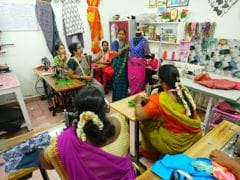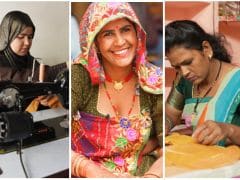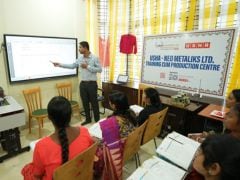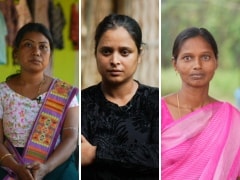- Home/
- Reviving Meghalaya's Khneng Embroidery And Empowering Women, One Stitch At A Time
Reviving Meghalaya's Khneng Embroidery And Empowering Women, One Stitch At A Time
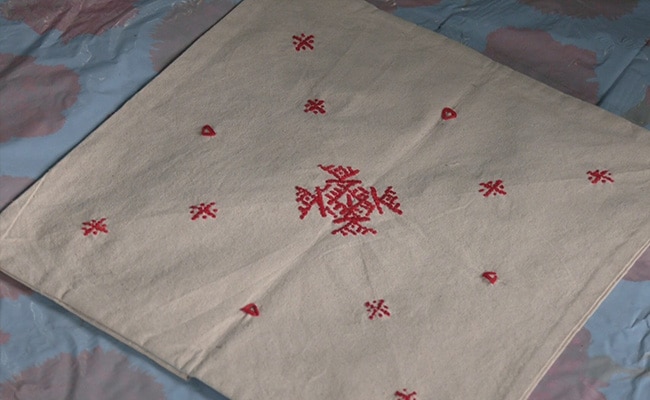
India is a nation of rich cultural diversity. Art styles and cultural practices vary from one region to another, reflecting seasons, history, traditions, and the living styles of the people. These practices are an inherent part of people's lives. Regionally and locally renowned styles of handloom and handicraft have been a huge advantage for the women entrepreneurs of the Usha Silai Schools.
Khneng, a multiline, centipede-like embroidery traditionally done on eri silk is a unique art form. Around 80 kms away from Shillong, in the Shella Bholaganj subdivision of East Khasi Hills district in Meghalaya lies a small village – Mustoh. It is the only known village for Khneng embroidery. It is the women who mostly work on the Khneng embroidery.
Also Read: With Usha Silai School's Support, Women From The Northeast Make It To The East India Fashion Week
Khneng embroidery uses needles and threads with basic running stitches and an attentive application of the mind, eyes, and hands. Khneng embroidery alone would not be a viable livelihood activity at present. Therefore, these local artisans are also involved in other local livelihood activities like teaching, maintaining small local shops and practising farming. But it is an art form that needs to be kept alive, and that is why the Meghalaya State Rural Livelihoods Society (MSRLS), joined hands with Usha International Limited.
“Initially, four villages in Meghalaya practiced Khneng embroidery but now, only two villages are practicing the same, that too only a few women,” said Peter Passah, Additional Deputy Commissioner, Shillong and Project Director, East Khasi Hills, Shillong. He added,
This particular embroidery is at a dying stage. An intervention by MSRLS and Usha Silai School will help revive a culture and empower women through training. This will help take this art form to other parts of the country.
The art of Khneng embroidery can be traced back to around 200 years ago. Though the exact origin of this form of embroidery is not known, the stitching is done on Eri, a type of silk locally known as Jain ryndia, which is eventually used to decorate the border of their traditional garments. That explains the genesis of the word 'Khneng' which in Khasi means border. The inspiration for the embroidery comes from a local insect called 'ktiar', which resembles a centipede.
A jainpien or wrap-around women's garment, will usually have one single line of a thick band stitched on it, while a shawl will have a thicker and thinner band of Khneng embroidery stitched horizontally.
So highly regarded is Khneng that it increases the value of the silk fabric that the embroidery is done on. That is why the hope that the partnership between MSRLS, who wants to work towards the sustenance of Khneng embroidery, and Usha, whose main aim is to train women in sewing and stitching and empower them with life skills, will take the women of Mustoh village to greater heights.
Talking about addressing the challenge of providing women with a market for Khneng embroidery, Virendra Vegad, Master Trainer, Usha Silai School, Mustoh Village, Meghalaya said,
There was a project where we had to create new products using the embroidery. When we started working on the project, we were faced with a challenge – the embroidery was being done in a particular way. We thought of giving it a new look so that it can fit nicely on new products. The initial three days went in an exercise where we asked the women to put down all the motifs used in their traditional embroidery. We then trained them on how to place these motifs differently, like symmetrical, asymmetrical, two symmetrical, and four symmetrical, among others. This gave women an idea of presenting their embroidery in different patterns and styles.
Following this, women were trained to apply these designs to different products. They went on to make cushion covers, table mats, and tea coasters.
Also Read: USHA And Northern Railways Join Hands To Make Jaipur Women Financially Independent
Mr Vegad added,
We did not tamper with their traditional stitch and quality. Instead, we created new products with the same old traditional embroidery and presented them in a new way.
One of the most important elements in working with embroidery is the thread count. The correct thread count gives evenly distributed motifs on the fabric. The stitching of motifs begins from the middle of the Khneng, and the women work their way outwards, count by count and part by part.
Traditionally, black wool is used for the embroidery on the checked Eri fabric because it balances the thickness of the fabric and the spaces of the checks. The beauty of Khneng embroidery, supplemented by better-developed skills in stitching and sewing, will lead to the creation of quality products, which will not only boost the confidence of the women artisans, but also help improve their circumstances.
For the same reason, women of Mustoh village in Meghalaya are being trained to stitch. Kishore Kalita, Deputy Manager, Usha International Ltd. said,
In this village, there was no tailoring centre. Only two to three women knew how to stitch. We started by administering this skill set and educating women on how to run a sewing machine. Gradually, we taught them how to draw a straight line; we are moving forward slowly.
Rosalyne Tiewmon, one of the trainees at the Usha Silai School believes that the programme will benefit her and her family. Ms Tiewmon, a homemaker aims to add to the family income with the newly acquired skill.
Abu Taher Mondal, Minister, Community and Rural Development Department, Government of Meghalaya said,
This is a 200-year-old embroidery system. Our forefathers envisioned at that point in time to enhance the beauty of the cloth. And today, with Usha's help, we expect that this will go a long way to revive our history and to empower our womenfolk and the local people's livelihood.
The joint initiative of Usha International and the Government of Meghalaya is a great step towards the empowerment of women, and eventually the progress of the area. This will not only enable the women to develop self-sufficiency but also bring Meghalaya's Khneng embroidery back to life - the revival of a heritage that will also bring a revival in its people's fortunes.
Also Read: USHA-Bhansali Trust Foundation Gives New Hope To Women In Gujarat, Provides Them Silai Training
also read
Threads Of Courage: Usha Silai School's Kushalta Ke Kadam Weaves Dreams Into Reality
Team NDTVStitching New Beginnings: How Usha Silai Schools Transformed Three Women's Lives
Written by Team NDTVUSHA x NDTV: From Uttar Pradesh To Bihar, Corporate Partnerships Drive Financial Freedom For Rural Women
Team NDTV
Related Stories
More- Team NDTV | Wednesday January 07, 2026
From Madhya Pradesh's stigma to Bihar's child marriages, Usha Silai School's NDTV-backed Kushalta Ke Kadam empowers women like Kalpana and Shabnam to stitch dignity and self-reliance
- Written by Team NDTV | Friday January 02, 2026
Usha Silai Schools give second chances to women like Srinagar's Marifat, who rebuilt after widowhood; Madhya Pradesh's Jyoti, escaping abuse to run her own center; and Rajasthan's Vimla, rising from child marriage to tailor and teacher. Through nine-day training, they gain sewing skills, confidence, and income proving one stitch mends lives and inspires communities.
- Team NDTV | Friday December 26, 2025
A new wave of corporate-community partnerships is equipping rural women with skills, income and confidence
- Written by Team NDTV | Friday December 12, 2025
USHAs Silai School Programme empowers women across India by turning sewing into independence. Women become trainers and leaders, transforming their lives and communities through skills, confidence, and income
Adopt a Silai School
About the Initiative
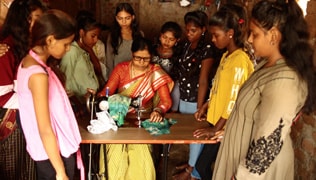
Kushalta Ke Kadam, an initiative by USHA Silai School and NDTV has entered its eighth season. The aim is to empower more women across rural India by teaching them sewing skills and helping them open new doors of opportunities for themselves. The initiative encourages rural women to become financially independent and entrepreneurs by taking up sewing and training others in their respective communities.
Since 2011, the USHA Silai School initiative has trained more than 12 lakh rural women through over 33,000 Silai schools, spanning over 20,751 villages across India.
The women earn Rs. 4,000 – 5,000 per month on an average, with the highest recorded monthly earning being Rs. 84,000 in a month. This earning works as a catalyst towards building their self-confidence, reducing gender inequities, and raising their stature within their families and in society at large.
In Pics
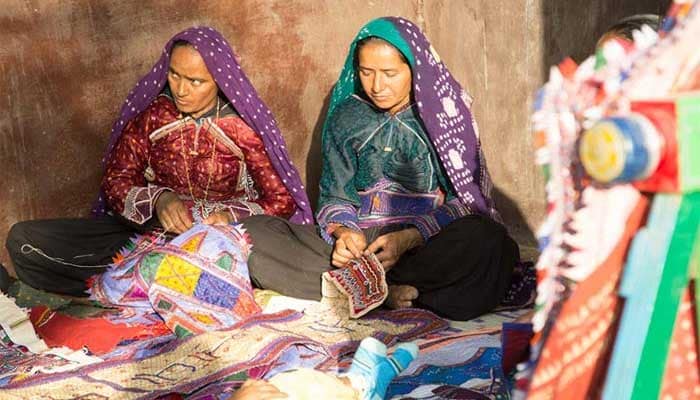
Rebari girls grow up learning traditional embroidery, which along with their new found sewing skills developed at Usha Silai Schools, is helping them earn a living.
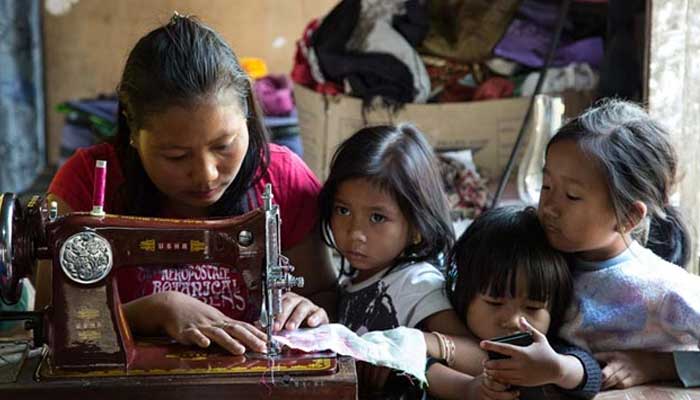
Usha Silai School has empowered many rural women to support their family and send their children to school.
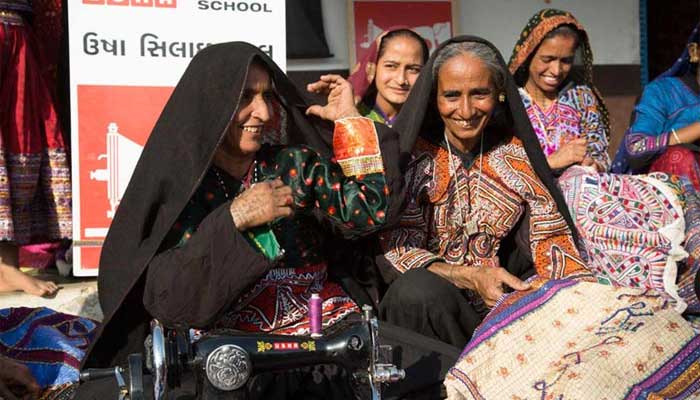
The Usha Silai School, established in a small nondescript village that goes by the name of Kottai, is helping empower people from varied communities.
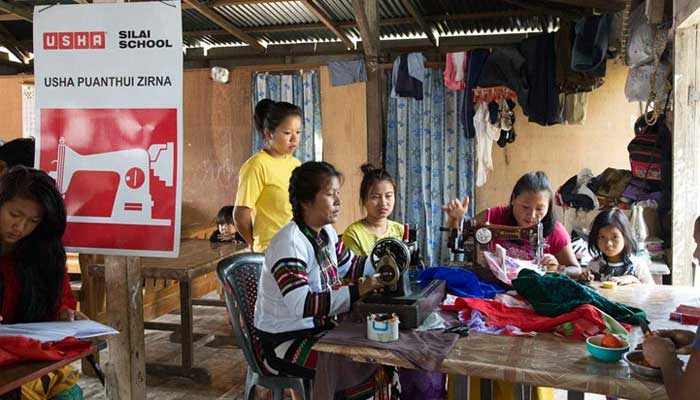
The all-inclusive Usha Silai School Programme covers the entire nation from hamlets tucked between hills to villages cast by the sea.
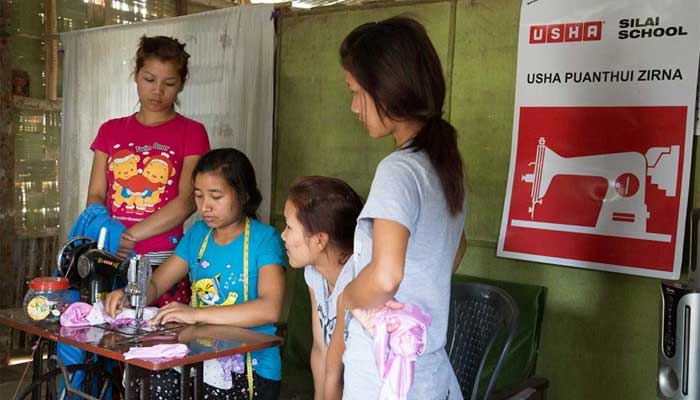
Vegetables farmers from the Mizoram hills earn very little given the topography of the area. Usha Silai Schools have played an important part in this region by skilling women to financially contribute towards their households.

Usha Silai School learner Lucy has trained seven other women in her community, helping them to become financially independent.

Women like Kaviben from the nomadic Rebari community are finally laying down their roots as they begin to gain financial independence and thereby stability through Usha Silai School.

Usha Silai School, located in the Gujarat's Bhuj village, is enabling rural women to earn as much as Rs. 2,500-4,000 each month.
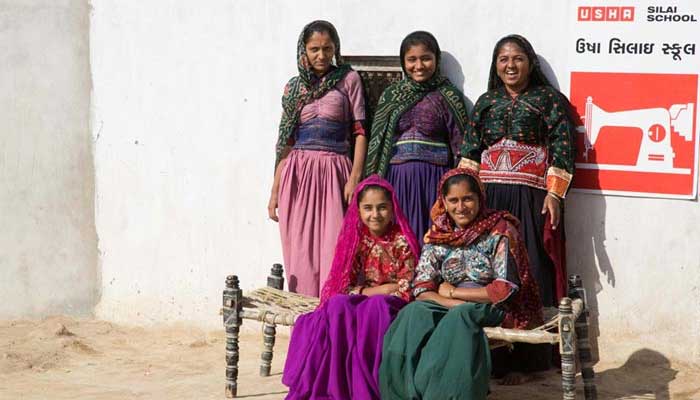
Usha Silai School, in association with a Gujarat based NGO called Kala Raksha, is trying to bring about a Silai revolution in Bhuj.
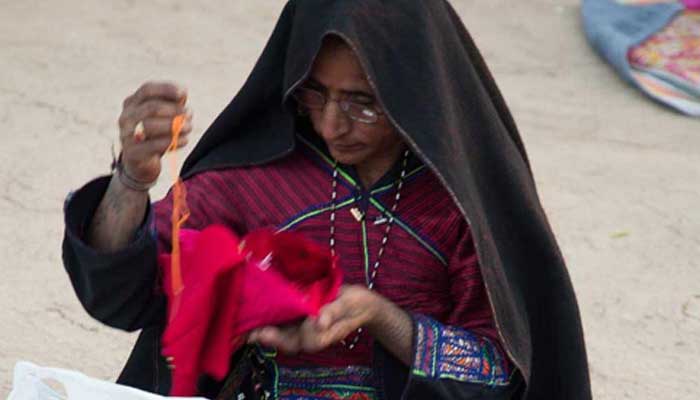
Besides training other women from their community, many Usha Silai School learners have become entrepreneurs in their own right.

With sewing becoming easily accessible and lucrative, the silai schools are also helping revive traditional motifs and designs.

